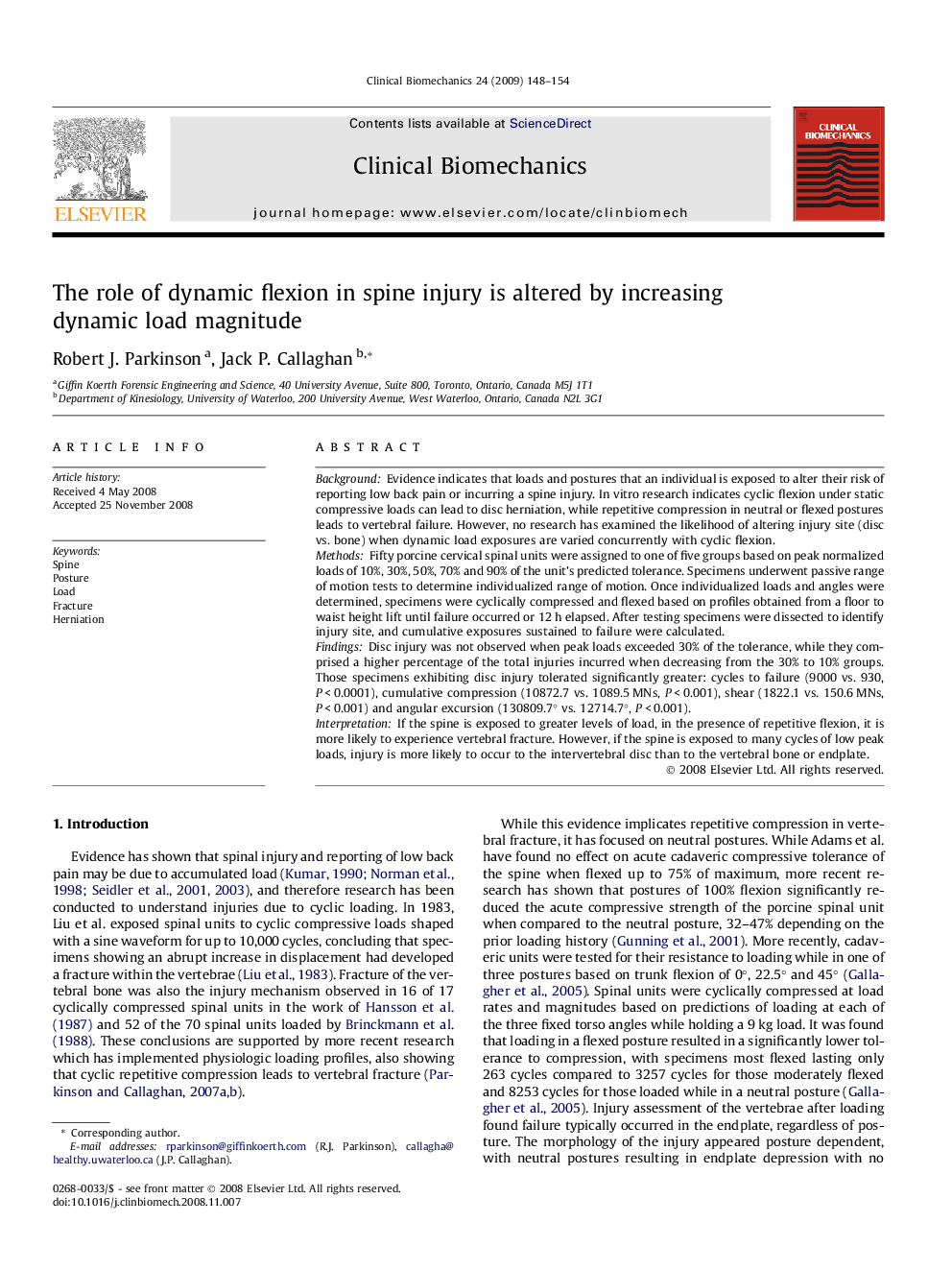| کد مقاله | کد نشریه | سال انتشار | مقاله انگلیسی | نسخه تمام متن |
|---|---|---|---|---|
| 4051021 | 1264970 | 2009 | 7 صفحه PDF | دانلود رایگان |

BackgroundEvidence indicates that loads and postures that an individual is exposed to alter their risk of reporting low back pain or incurring a spine injury. In vitro research indicates cyclic flexion under static compressive loads can lead to disc herniation, while repetitive compression in neutral or flexed postures leads to vertebral failure. However, no research has examined the likelihood of altering injury site (disc vs. bone) when dynamic load exposures are varied concurrently with cyclic flexion.MethodsFifty porcine cervical spinal units were assigned to one of five groups based on peak normalized loads of 10%, 30%, 50%, 70% and 90% of the unit’s predicted tolerance. Specimens underwent passive range of motion tests to determine individualized range of motion. Once individualized loads and angles were determined, specimens were cyclically compressed and flexed based on profiles obtained from a floor to waist height lift until failure occurred or 12 h elapsed. After testing specimens were dissected to identify injury site, and cumulative exposures sustained to failure were calculated.FindingsDisc injury was not observed when peak loads exceeded 30% of the tolerance, while they comprised a higher percentage of the total injuries incurred when decreasing from the 30% to 10% groups. Those specimens exhibiting disc injury tolerated significantly greater: cycles to failure (9000 vs. 930, P < 0.0001), cumulative compression (10872.7 vs. 1089.5 MNs, P < 0.001), shear (1822.1 vs. 150.6 MNs, P < 0.001) and angular excursion (130809.7° vs. 12714.7°, P < 0.001).InterpretationIf the spine is exposed to greater levels of load, in the presence of repetitive flexion, it is more likely to experience vertebral fracture. However, if the spine is exposed to many cycles of low peak loads, injury is more likely to occur to the intervertebral disc than to the vertebral bone or endplate.
Journal: Clinical Biomechanics - Volume 24, Issue 2, February 2009, Pages 148–154